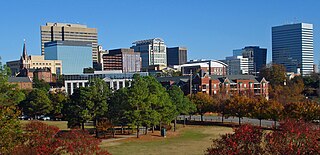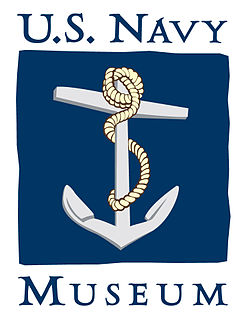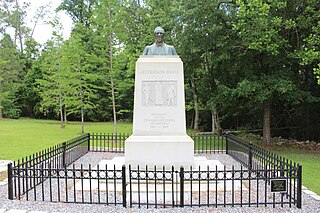Related Research Articles

Columbia is the capital of the U.S. state of South Carolina. With a population of 136,632 as of the 2020 U.S. Census, it is the second-largest city in South Carolina. The city serves as the county seat of Richland County, and a portion of the city extends into neighboring Lexington County. It is the center of the Columbia metropolitan statistical area, which had a population of 829,470 and is the 72nd-largest metropolitan statistical area in the nation. The name Columbia is a poetic term used for the United States, derived from the name of Christopher Columbus, who explored for the Spanish Crown. Columbia is often abbreviated as Cola, leading to its nickname as "Soda City."

The South Carolina State Museum has four floors of permanent and changing exhibits, a digital dome planetarium, 4D interactive theater and an observatory. The State Museum, is located along the banks of the Congaree River in downtown Columbia, South Carolina. It is the largest museum in the state, and is a Smithsonian Affiliate and part of the American Alliance of Museums. Positioned on an old shipping canal that dates back to pre-Civil War times, the museum is widely recognized as a resource for South Carolina history and lifestyle. The museum opened on October 29, 1988, and is housed in what it calls its largest artifact, the former Columbia Mills Building, listed on the National Register of Historic Places in 1982. When the mill opened in 1894, manufacturing cotton duck cloth, it was the first totally electric textile mill in the world. It was also the first major industrial installation for the General Electric corporation. On certain levels of the museum, the original flooring has been kept intact, distinguishable by hundreds of textile brads and rings that became embedded in the floor while it was still being used as a mill. The South Carolina Confederate Relic Room & Military Museum is located within the Columbia Mills Building, and is the oldest museum exhibit in Columbia.

John Jones McRae was an American Democratic politician.

The Citadel, The Military College of South Carolina, commonly known simply as The Citadel, is a public senior military college in Charleston, South Carolina. Established in 1842, it is one of six senior military colleges in the United States. It has 18 academic departments divided into five schools offering 31 majors and 57 minors. The military program is made up of cadets pursuing bachelor's degrees who live on campus. The non-military programs offer 12 undergraduate degrees, 26 graduate degrees, as well as evening and online programs with seven online graduate degrees, three online undergraduate degrees, and three certificate programs.

The South Carolina State House is the building housing the government of the U.S. state of South Carolina, which includes the South Carolina General Assembly and the offices of the Governor and Lieutenant Governor of South Carolina. Located in the capital city of Columbia near the corner of Gervais and Assembly Streets, the building also housed the Supreme Court until 1971.

The National Museum of the United States Navy, or U.S. Navy Museum for short, is the flagship museum of the United States Navy and is located in the former Breech Mechanism Shop of the old Naval Gun Factory on the grounds of the Washington Navy Yard in Washington, D.C., United States.
Robert D. "Bob" Coble is a former mayor of Columbia, South Carolina. Coble has been a resident of Columbia for most of his life having graduated from Dreher High School in 1971 where he was student body president. Coble and Frannie Heizer won the 1971 South Carolina State High School Debate Championship. Coble graduated from the University of South Carolina in 1975 cum laude and the University of South Carolina School of Law in 1978 cum laude. Coble was elected to the Richland County Council in 1985 and served until 1988. Coble was elected Mayor of Columbia South Carolina in 1990 and served until 2010. Mayor Coble was elected Mayor five times and in his last re-election in 2006 received 64% of the citywide vote. He was succeeded as mayor by Steve Benjamin. Coble is married to Beth Coble, the daughter of former South Carolina Attorney General Daniel McLeod in 1978. They are the parents of six children and ten grandchildren.

Columbia, the capital city of South Carolina, was an important political and supply center for the Confederate States Army during the American Civil War. Much of the town was destroyed during occupation by Union forces under Major General William T. Sherman during the Carolinas Campaign in the last months of the war. Sherman was accused almost immediately of having deliberately and needlessly burned the city, which he denied. Modern historians say that multiple causes were responsible.

Jefferson Davis Memorial Historic Site is a 12.668-acre (5.127 ha) state historic site located in Irwin County, Georgia that marks the spot where Confederate States President Jefferson Davis was captured by United States Cavalry on Wednesday, May 10, 1865. The historic site features a granite monument with a bronze bust of Jefferson Davis that is located at the place of capture. The memorial museum, built in 1939 by the Works Progress Administration, features Civil War era weapons, uniforms, artifacts and an exhibit about the president's 1865 flight from Richmond, Virginia to Irwin County, Georgia.
The Pee Dee Light Artillery was a distinguished Confederate light artillery battery during the American Civil War. The origins of the battery began as the Darlington Guards, a local militia of Darlington, South Carolina. The Darlington Guards volunteered their service to South Carolina on January 4, 1861, for a period of six months. These men were the very first soldiers to volunteer to fight in Civil War. They became Company B, First South Carolina Volunteers, commanded by Captain F.F. Warley and Lieutenant David Gregg McIntosh. After six months on the Charleston, South Carolina, coast and a short campaign in Virginia, the unit was released. Half the unit remained with Captain Warley and served the remainder of the war as the Darlington Guards. The other half reformed in Darlington, South Carolina, under McIntosh. The unit called themselves the Pee Dee Rifles and in August 1861 rendered their service as an infantry unit to the Confederate States of America for the duration of the war. While in training in Suffolk, Virginia, in the winter of 1861-62, the unit was reorganized as Company D, First South Carolina Regiment, a light artillery battery, and became the Pee Dee Light Artillery.

The Museum of the American Revolution is a museum in Philadelphia, Pennsylvania, dedicated to telling the story of the American Revolution. The museum was opened to the public on April 19, 2017, the 242nd anniversary of the first battles of the war, at Lexington and Concord, on April 19, 1775.
Colin J. McRae was an American politician who had served as a Deputy from Alabama to the Provisional Congress of the Confederate States from 1861 to 1862.

Orr's Rifles was a South Carolina infantry regiment that served in the Confederate States Army during the American Civil War.

World War Memorial Building is a building designed by Lafaye & Lafaye in Columbia, South Carolina, United States.

This article examines South Carolina's history with an emphasis on the lives, status, and contributions of African Americans. Enslaved Africans first arrived in the region in 1526, and the institution of slavery remained until the end of the Civil War in 1865. Until slavery's abolition, the free black population of South Carolina never exceeded 2%. Beginning during the Reconstruction Era, African Americans were elected to political offices in large numbers, leading to South Carolina's first majority-black government. Toward the end of the 1870s however, the Democratic Party regained power and passed laws aimed at disenfranchising African Americans, including the denial of the right to vote. Between the 1870s and 1960s, African Americans and whites lived segregated lives; people of color and whites were not allowed to attend the same schools or share public facilities. African Americans were treated as second-class citizens leading to the civil rights movement in the 1960s. In modern America, African Americans constitute 22% of the state's legislature, and in 2014, the first African American U.S. Senator since Reconstruction, Tim Scott, was elected. In 2015, the Confederate flag was removed from the South Carolina Statehouse after the Charleston church shooting.
The Civil War Trust's Civil War Discovery Trail is a heritage tourism program that links more than 600 U.S. Civil War sites in more than 30 states. The program is one of the White House Millennium Council's sixteen flagship National Millennium Trails. Sites on the trail include battlefields, museums, historic sites, forts and cemeteries.
The following is a timeline of the history of the city of Columbia, South Carolina, USA.

Although the Confederate States of America dissolved at the end of the American Civil War (1861–1865), its battle flag continues to receive modern display. The modern display began during the 1948 United States presidential election when it was used by the Dixiecrats, a political party that opposed civil rights for African Americans and supported racial segregation. Further display of the flag was a response to the civil rights movement and the passage of federal civil right laws in the 1950s and 1960s.
The South Carolina Heritage Act is a South Carolina statute that forbids the removal or alteration of historic monuments located on public property in South Carolina as well as the rededication of any public areas or structures named after a historic person or event. The historic monuments protected include war monuments as well as monuments representing Native American and African American history.
References
- 1 2 "About Us". South Carolina Confederate Relic Room and Military Museum. Archived from the original on December 30, 2017. Retrieved January 30, 2018.
- ↑ "Museums Committed to Excellence". ww2.aam-us.org. Archived from the original on 2021-06-30. Retrieved 2021-06-07.
- ↑ "Malvina Gist Gallery". South Carolina Confederate Relic Room and Military Museum . Retrieved April 29, 2022.
- ↑ "SC in Vietnam". South Carolina Confederate Relic Room and Military Museum . Retrieved April 29, 2022.
- ↑ "Write From The Front". South Carolina Confederate Relic Room and Military Museum. Archived from the original on 2021-06-25. Retrieved 2021-06-25.